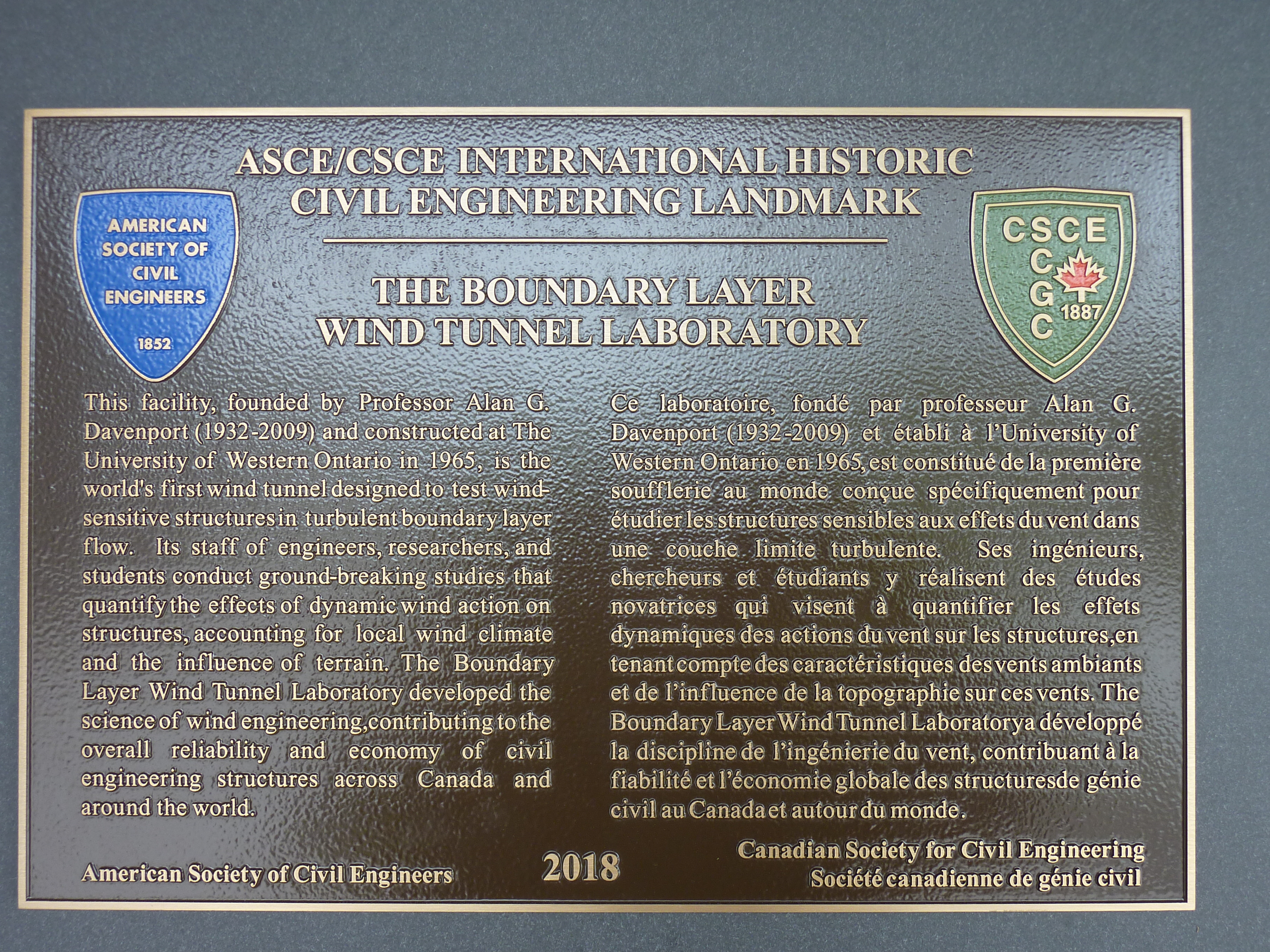Boundary Layer Wind Tunnel Laboratory
43°00'14.0"N, 81°16'32.5"W
The Boundary Layer Wind Tunnel Laboratory was the world’s first boundary layer wind tunnel designed to test wind-sensitive structures in turbulent boundary layer flow. It developed the science of wind engineering, contributing to the overall reliability and economy of civil engineering structures across Canada and around the world.
The first proper wind tunnel was invented in 1871 by Englishman Frank H. Wenham (1842-1908). It was an 18-foot long, 18 inch square tube fed by a steam powered fan. The Wright Brothers also employed similar type of wind tunnel, with a gasoline engine driven fan, for experiments prior to their first successful flight in 1903. Nearly all early wind tunnel work was applied to the study of flight or focused on the effects of steady uniform air flow on civil engineering structures. It was not until 1950, following the failure of the Tacoma Narrows Bridge, that a need was recognized to study the effects of turbulent air flow on man-made structures. Such turbulent flow occurs within the first 3,000 feet of height above ground, commonly known as the ‘boundary layer’.
The Boundary Layer Wind Tunnel at Western University, near Toronto, Ontario, was the world’s first boundary layer wind tunnel built to test civil engineered structures in turbulent air flow as well as the dynamic wind-induced responses of structures. It was proposed by wind engineer, Alan G. Davenport, designed by Davenport and fellow engineer and professor at Western University, Jim W. Stewart, and constructed in 1965. A second, parallel wind tunnel was added in 1984.
The 1965 Boundary Layer Wind Tunnel was 100 feet long and 7.5 x 8 feet in cross section allowing for scale models of natural topography and man-made structures to be placed surrounding the object to test and study its reactions in near real-life conditions. Buildings, bridges, cooling towers, tall chimneys and other engineered structures—including the Willis Tower (formerly the Sears Tower), CN Tower, Canary Wharf Complex, Sunshine Skyway Bridge, and Tsing Ma Bridge—were tested at the facility.
The valuable research conducted at the Boundary Layer Wind Tunnel added greatly to the knowledge of modern wind engineering and allowed for the design and construction of much safer and more comfortable structures worldwide. Success led to the construction of several more such facilities, including laboratories studying the effects of hurricane force winds on structures.

References:
Whirling Arms and First Wind Tunnels, from book “Wind Tunnels by NASA”, by Donald D. Baals and William Corliss.
The First Wind Tunnels, by Judy Rumerman, U.S. Centennial of Flight Commission

